#duchess olga of württemberg
Text

Grand Duchess Olga Nikolaevna (later Queen Olga of Wurttemberg) by N.De Keyser (1848)
(Two photographs from the Royal Collection Trust has been added below)


#russian history#romanov dynasty#Grand Duchess Olga Nikolaevna#Nicholas I#Queen Olga of Württemberg#N.De Keyser
28 notes
·
View notes
Text

Великая княжна Ольга Николаевна в дневнике Жозефа Виельгорского. 1838 год.
9 февраля (28 января) "Вечером в Эрмитаже. Прелестные великие княжны. Был счастлив видеть, что они стесняются. Ольга была изумительна".
11 февраля (30 января) "Чудесная Ольга дружески поздоровалась со мною, подозвала меня и расспрашивала обо всем семействе с очаровательной добротой и непринужденностью. Какое восхитительное создание. Ее красота столь же незаурядна, сколь мастерство Тальони".
7 марта (23 февраля)"Ольга Никол<аевна> спросила меня, веду ли я дневник, как Адлерберг; она одна проявляет ко мне какой-то интерес".
6 апреля (25 марта) "Любовался Ольгою Николаевною".
11 апреля (30 марта) "Из дам меня интересуют только Императрица и Великие Княжны, но более воспоминанием, нежели настоящею любовью. Любовь к Ольге Николаевне прошла; ее холодность, появление Taglioni были причиною сего изменения".
18 (6) апреля "Однако мое внимание было поглощено Ольгой Н<иколаевной>; это невероятная, неслыханная, неземная красота".
22 (10) апреля "Был у обедни; мне кажется, что Ольга Ник<олаевна> в некотором пренебрежении; я очень рад этому. ︎Дай ей Бог сохранить чистоту".
2 notes
·
View notes
Text
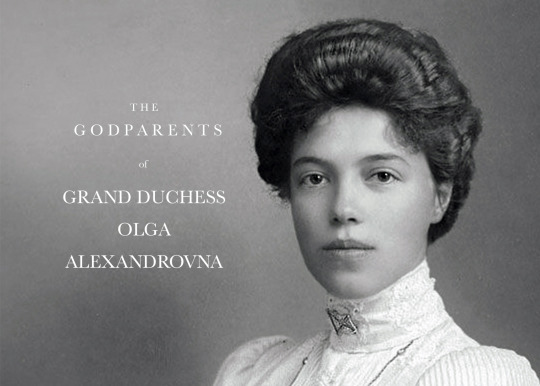

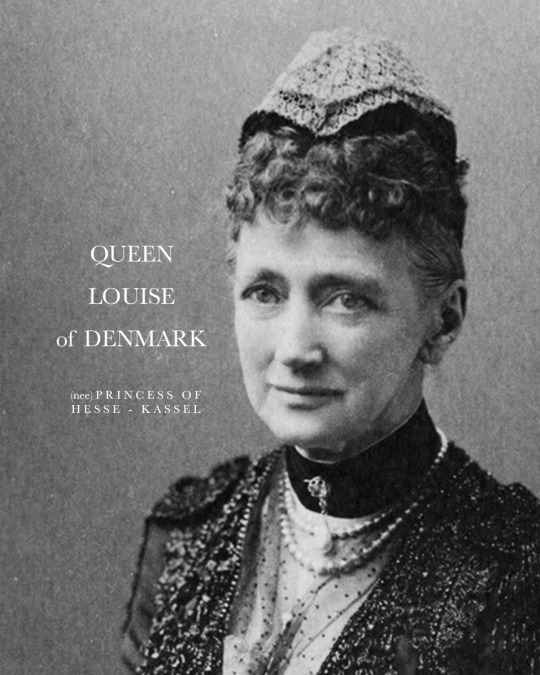



GODPARENTS OF GRAND DUCHESS OLGA ALEXANDROVNA
Grand Duchess Olga Alexandrovna, the youngest daughter of Emperor Alexander III of Russia, was born on 13 June 1882 at Peterhof Palace in Saint, Petersburg, Russia. She was christened on 23 July (Saint Olga's Day) in the Grand Palace Church, Peterhof by the Confessor of Their Imperial Majesties archpriest Bazhanov. Her godparents as listed:
KING CHRISTIAN IX OF DENMARK - her maternal grandfather, the Danish King was among her godparents. His initial unpopularity at the start of his reign, and the many years of political strife, where the king was in conflict with large parts of the population, his popularity recovered towards the end of his reign, and he eventually became a national icon due to the length of his reign. He was absent at the christening of his Russian grandchild.
PRINCESS LOUISE OF HESSE-KASSEL, QUEEN CONSORT OF DENMARK - his maternal grandmother was another of her godparents. Louise became the Queen consort of Denmark upon her husband’s - King Christian IX - accession in 1863. Through her six children, she was a grandmother of not only the future Tsar of Russia (Nicholas II, Olga's eldest brother), but also that of King George V of the United Kingdom; King Constantine I of Greece; King Christian X of Denmark, and King Harken VII of Norway. Like her husband, Louise was also absent at the christening.
GRAND DUCHESS OLGA NIKOLAEVNA OF RUSSIA, QUEEN CONSORT OF WÜRTTEMBERG - her great-aunt was one of her godparents. She was the younger sister of her late grandfather, Alexander II. Attractive, cultured and intelligent, she had been considered to be one of the most eligible princesses in Europe. In 1846, she married Crown Prince Karl of Württemberg. She was absent at the christening of her namesake.
GRAND DUCHESS OLGA KONSTANTINOVNA OF RUSSIA, QUEEN CONSORT OF GREECE - her aunt and namesake was named as one of her godparents. Olga Konstantinovna was the first cousin of her father Alexander III, being the eldest daughter of Grand Duke Konstantin Nikolaevich of Russia. At 16, she married King George I of Greece, the brother of her mother Maria Feodorovna. Queen Olga was a popular figure in Russia, and in Greece. She was present at the christening.
GRAND DUKE ALEXEI ALEXANDROVICH OF RUSSIA - her uncle was another listed godparent of the young grand duchess. A naval officer for most of his life, he had a significant contribution in the equipment of the Russian navy with new ships and in modernizing the naval ports. He was present at the christening of his niece.
Source
30 notes
·
View notes
Note
What were the appearances of Nicholas I's daughters? What were the physical characteristics of Maria, Olga and Alexandra? And who was the sister who was considered the most beautiful, majestic, and admired in Europe? And of course, which daughter of Nicholas and his wife Alexandra did he find most beautiful?
Hi! Here are a few firsthand accounts for you:
“The three princesses, Olga, Marie, and Alexandrine enchanted me more than any beauties have for a long time. They are surely the most beautiful creatures I've ever seen. Olga is really imperially proud--a great beauty; Alexandrine is the highest loveliness, delicacy, and grace. Marie is the least beautiful, but interesting and the most lively of the three.” —Robert Schumann
“Grand Duchesses Olga and Alexandra Nikolaevna were of such amazing beauty that, in my opinion, they had no rivals in the aristocratic world at that time.” — Count Mikhail Buturlin
“The Grand Duchess Olga Nikolaevna, beloved of all the Russians; it is indeed impossible to imagine a more lovely face, which would express such a degree of gentleness, kindness, and tolerance. She is very slim, her face translucent, and her eyes have that unusual sparkle which poets and lovers describe as heavenly […] The very youngest grand duchess, Alexandra […] still has something of the child in her; she is very lively and mischievous, and is promising to be the most beautiful of all the sisters.” — Dutch General Friedrich Gagern
“Little Marie is grace personified.” — Dowager Empress Maria Feodorovna of Russia
“She [Maria]was prettier, the butterfly had fluttered out of the cocoon. Her resemblance to Papa was now particularly pronounced, and in profile she seemed his miniature… She combined a strict classical face with lively facial expressions. Her forehead, nose, and mouth were completely regularly, her shoulders and chest were perfectly developed, and her waist was so slender that the band from her Greek coiffure would fit around it.— Queen Olga of Württemberg
“She [Maria] is a bit taller than me, a miniature as to features of her father... she is very lively, and has much frankness and abandon in her manner, & certainly is attractive.” — Queen Victoria
“My little Oline [Olga] is without question the most beautiful child you could hope to see.” — Dowager Empress Maria Feodorovna of Russia
“The Grand Duchess Olga, the second of the Emperor's daughters, has no rival in beauty amongst the princesses of Europe; and in this instance, flattery, in asserting her to be the loveliest girl in her father's dominions, scarcely outstrips the truth.” — Charles Frederick Hennigsen
“… a tall and slender blonde, a perfect beauty, with the profile of a cameo and big blue eyes. It was the middle daughter of the empress, Grand Duchess Olga Nikolaevna, subsequently the Queen of Wuerttemberg, one of the most beautiful women in Europe.” — A.I. Sokolova
“The answer to the ordinary vulgar question of which of the three grand duchesses (Maria, Olga, and Alexandra Nikolaevna) was most beautiful is very difficult to say, but in my opinion, the Grand Duchess Alexandra Nikolaevna stood above her sisters in this respect because her beauty was unearthly, like a creature doomed by Providence to leave this world in her youngest years.” — Prince Alexander Vasilyevich Meshchersky
“Alexia [Alexandra] is certainly a remarkable child, as beautiful as the day and so good.” — Dowager Empress Maria Feodorovna of Russia
“The three young Princesses were the most beautiful of all the family: Marie, her father's favorite, blonde with blue eyes and a delicate complexion, small, rather thin, recalling to mind the Great Catherine, not only by her fine profile, but also by certain traits in her spontaneous, impulsive, and sensual nature; Olga--a beautiful, noble, pale figure, slender and elegant, with a spiritual expression, and superb black hair framing the absolutely pure oval of her face; finally Alexandrine, the youngest, with a long neck and narrow chest, lively, teasing, a frail and fragile figure full of grace and childish gaiety, generally considered to be the living portrait of her mother.” — Constantine de Grunwald
“Mary is in the giraffe stage, is pale and thin, but has charming characteristics and will be a delightful individual; Olly has kept her kind of face but is getting thin and growing a lot; Adini is very small and very mischievous, but I do not think she is pretty in spite of others' opinions.” — Emperor Nicholas I of Russia (16 February 1828)
30 notes
·
View notes
Text
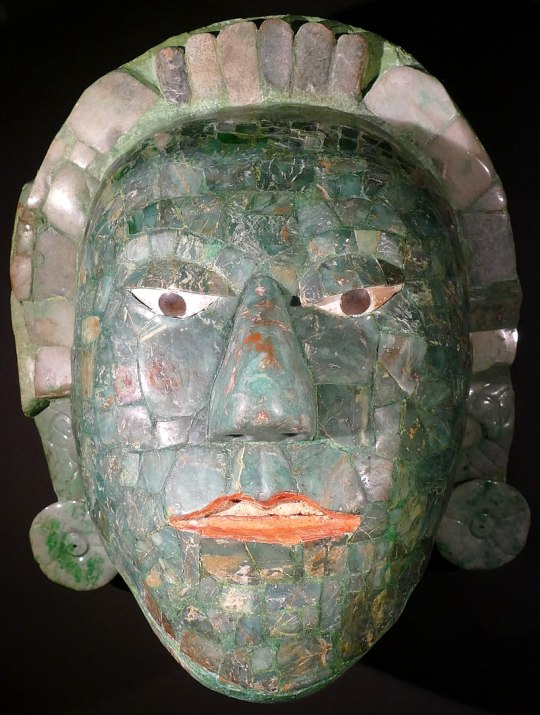




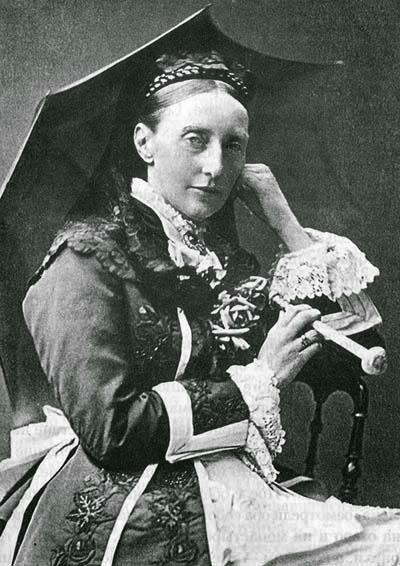
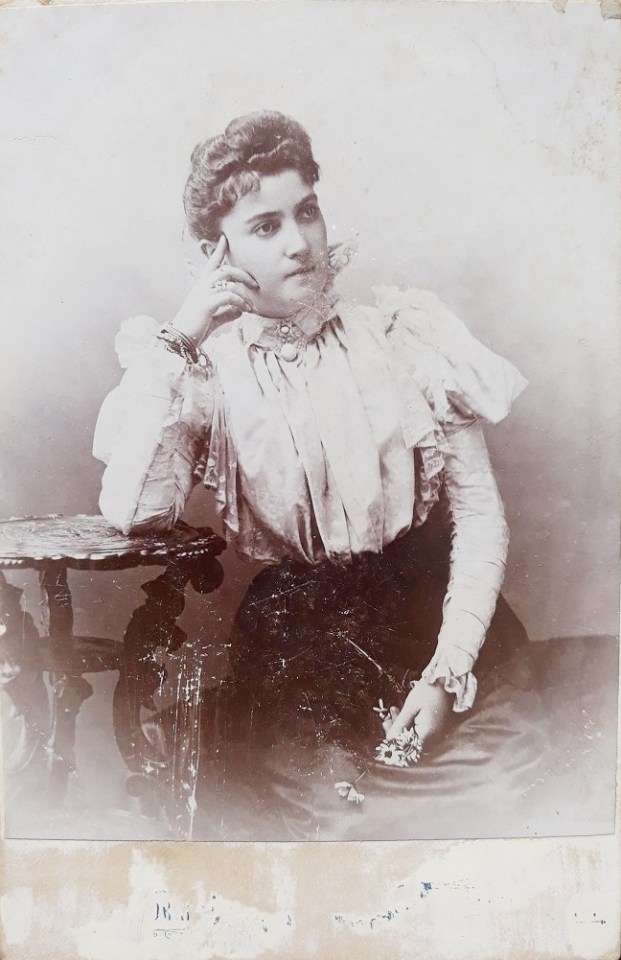


Royal Birthdays for today, September 11th:
Yuknoom Chʼeen II, Mayan King, 600
Louise of Savoy, Duchess of Nemours, 1476
Daniyal Mirza, Mughal Prince, 1572
Anna Maria of Liechtenstein, Princess Consort of Liechtenstein, 1699
Charlotte of Saxe-Meiningen, Duchess of Saxe-Gotha-Altenburg, 1751
Olga Nikolaevna, Queen of Württemberg, 1822
Draga Obrenović, Queen of Serbia, 1864
Paola, Queen of Belgium, 1937
Kiko, Crown Princess of Japan, 1966
#louise of savoy#Daniyal Mirza#Charlotte of Saxe-Meiningen#Draga Obrenović#queen paola#crown princess kiko#Yuknoom Chʼeen II#Anna Maria of Liechtenstein#Olga Nikolaevna#royal birthdays#long live the queue
13 notes
·
View notes
Text

Olga of Württemberg (1 March 1876 – 21 October 1932) was a daughter of Duke Eugen of Württemberg and Grand Duchess Vera Constantinovna of Russia. She married Prince Maximilian of Schaumburg-Lippe.
2 notes
·
View notes
Text
The design of SPOP She-Ra
The original transformation to be clear.
A still controversial topic, if I think needlessly so.
Indeed most even overlook what ar the actual inspirations for the costume, which are public for some time, as even seen in a released production description of the design:

(A close to final design, with some slight differences like a different Sword of Protection, and more detailed bracers)
The military elements are more obvious when mentioned, with it becoming clear the design is meant to invoke the Filmation She-Ra design, combined with a historic (or ceremonial) military uniform:
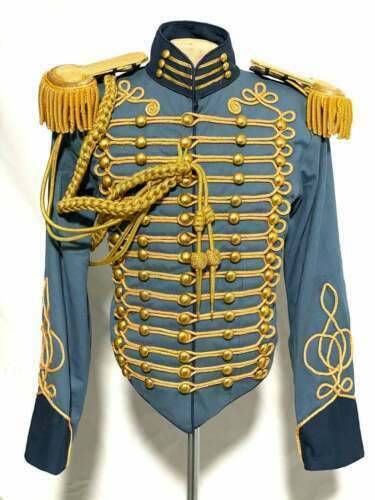
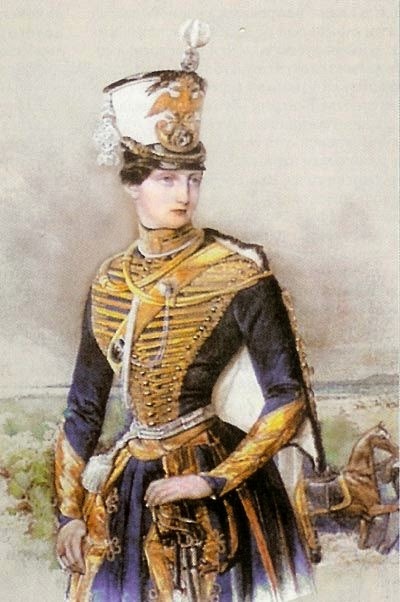
(Olga Nikolaevna of Russia, Grand Duchess of Russia, Queen consort of the Kingdom of Württemberg, in a Hussar uniform, painting from early 1840s, unknown author.)

(photo of Mária Lebstück, female Hussar officer from the time of the Hungarian War of Independence of 1848 and 1849)
Some also noted some similarities to a knight's/crusader's armor, but it's lesser than the military aspect, and the knight element is more emphasized in Mara's transformation:

All of this makes sense, as Adora did see herself as a soldier when she first transformed, and even some after it.
Shorts are also indeed practical, and worn by many fictional female warriors and fighters..including Wonder Woman in her debut (her first bell-bottom shorts are often mistaken for a skirt).

(Sensation Comics #2, 1942)
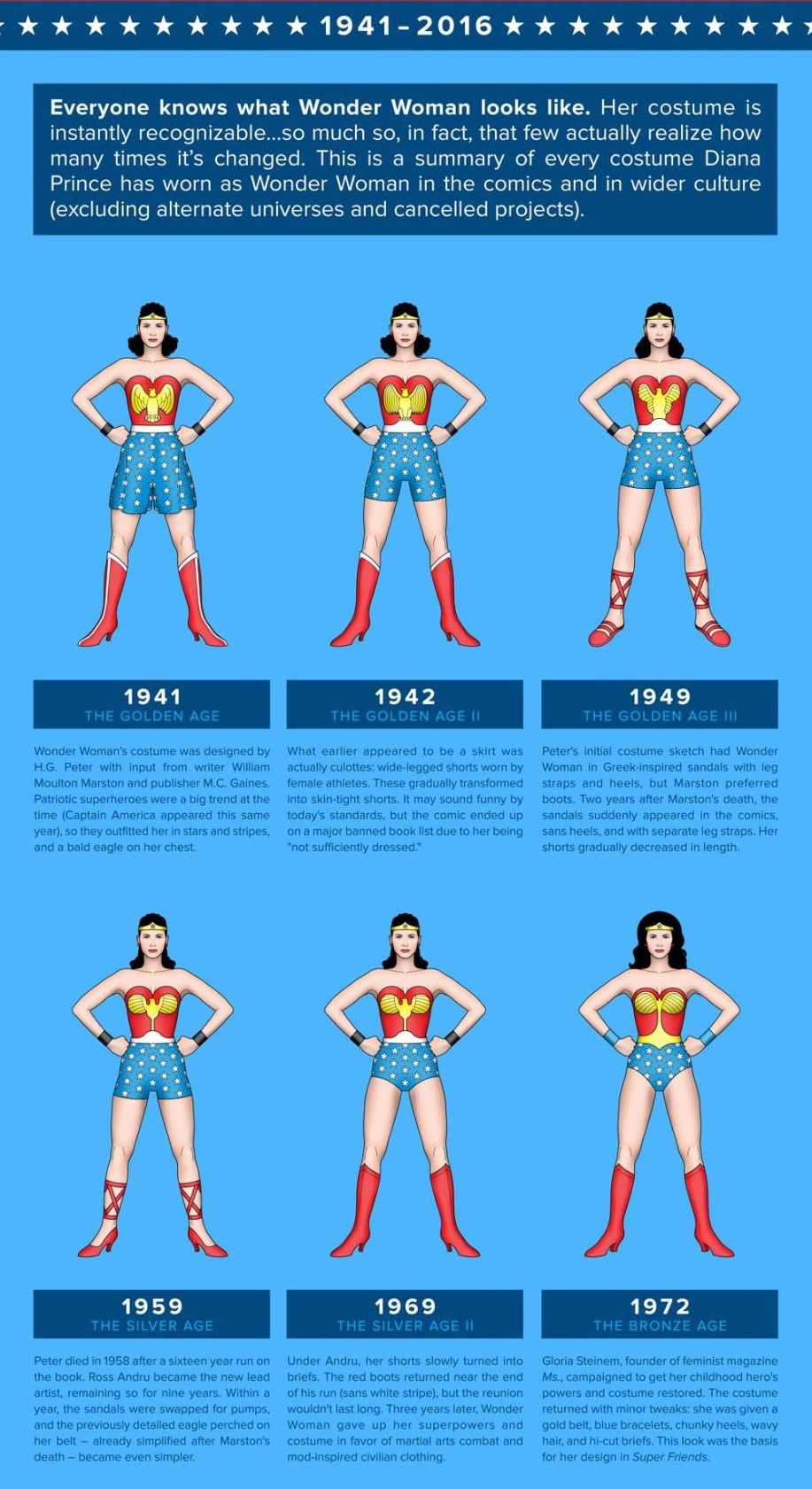
Which is fitting, as Wonder Woman is one of the inspirations for She-Ra in the first place (if not the only).
It's also pretty popular in Japanese made media:

(Ravness Loxaerion from PSP re-release/remaster/basically remake of Tactics Ogre: Let Us Cling Together)

(Utena Tenjou from Revolutionary Girl Utena)

(Leinas Rockbruise from the anime adaptation of the Overlord light novel)
(These are examples of shorts being used, rather than inspirations. Well, there is a bigger possibility Utena and/or Wonder Woman were some inspiration).
In terms of other version's of She-Ra design being an inspiration (outside of the Filmation cartoon design), well, there are a few possibilities.
Another inspiration could be the 2017 She-Ra statue (by Sideshow). Especially that Nate Stevenson owns it, and quite likes it:
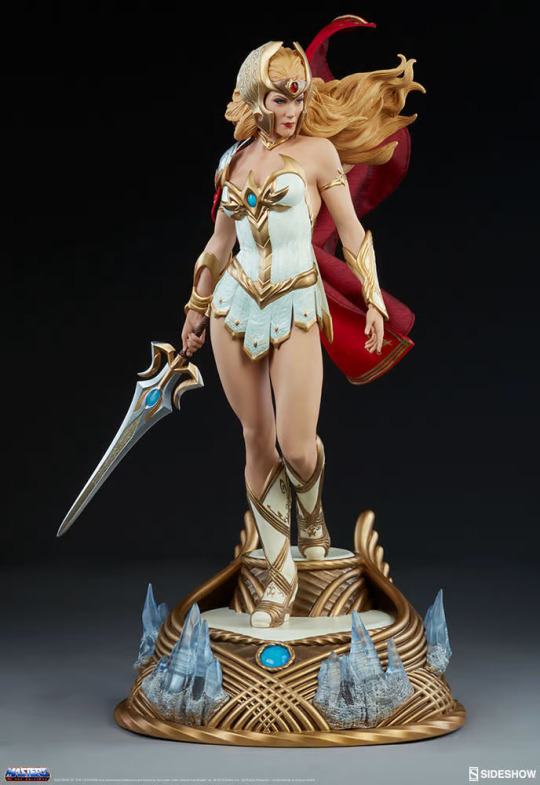
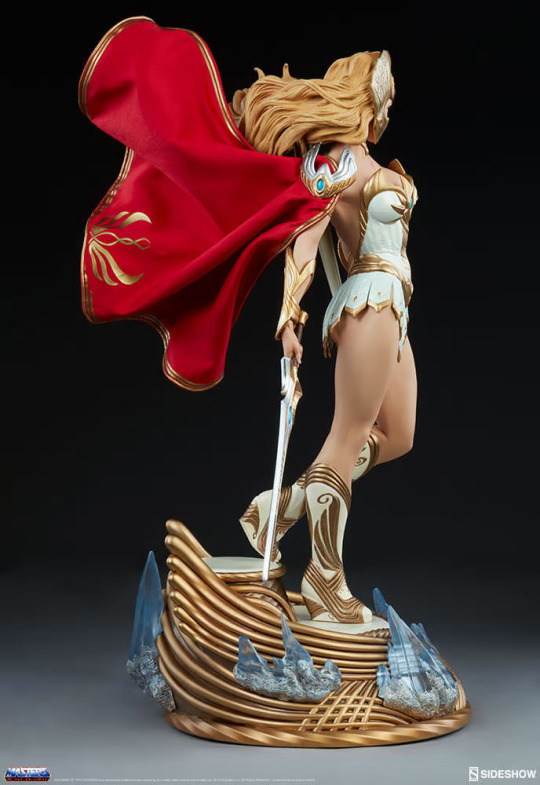
As we see they share a very similar symbol, it's placement on the chest and connecting to the belt. As well having extremely similar boots and a pauldron analogous to SPOP She-Ra's epaulettes. The bracers also have some similar elements, if more with overall shape, if not exact design, otherwise having the solid gold design of the classic Filmation design. (if the late concept being even more similar).
Buuut, and another source of inspiration, might be Filmation's own concepts for She-Ra:

Here were see an early Filmation design of She-Ra, who has a very similar symbol to SPOP She-Ra and the statue.

Here we see a Design for She-Ra a more covered, and seemingly armored torso. She also has pauldrons/epaulettes.
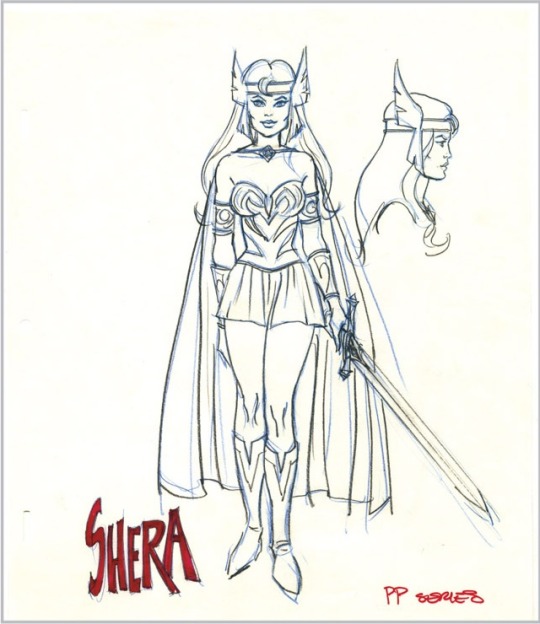
And here we see a simpler crown/diadem, quite similar to the latter SPOP one.
And Adora own design was seemingly inspired by her unused/prototype Filmation design:
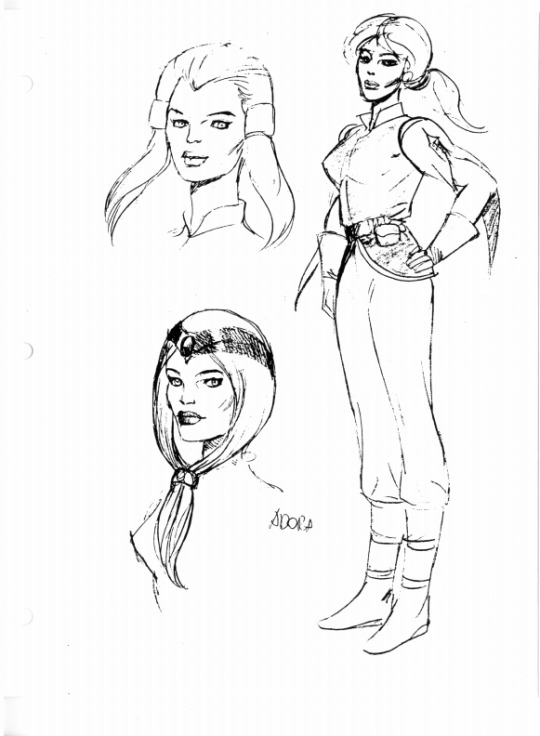
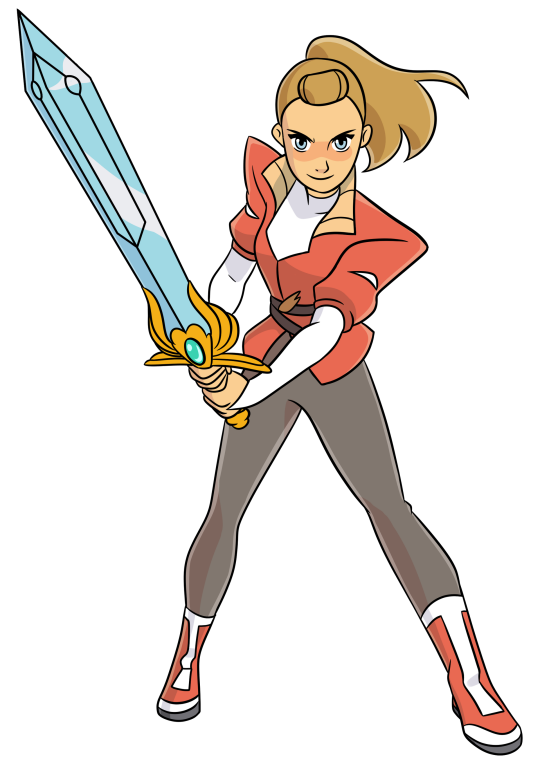
So there is a real possibility these were also an inspiration.
#she-ra#shera#she ra#spop#motu#masters of the universe#design#controversy#inspiration#military#uniform#military uniform#hussar#history#mara#wonder woman#shorts#golden age comics#sideshow collectibles#filmation she ra#classic she ra#concept art#unused#adora#filmation motu#filmation#female warrior#utena#sideshow#statue
43 notes
·
View notes
Text
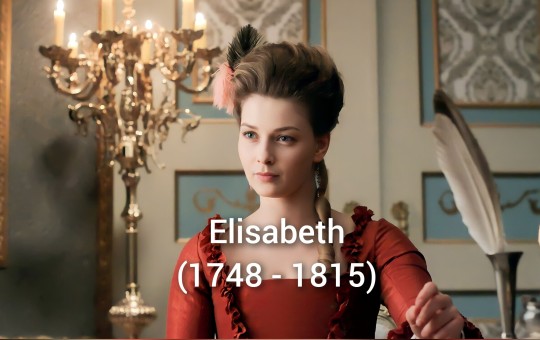



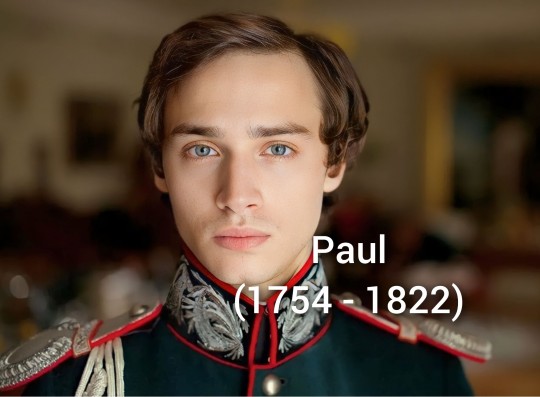
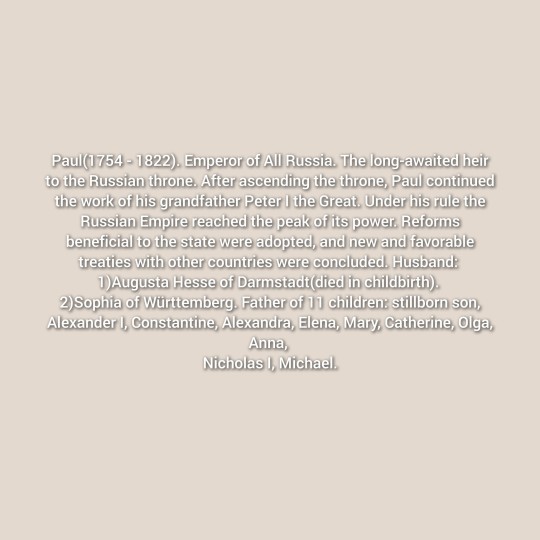
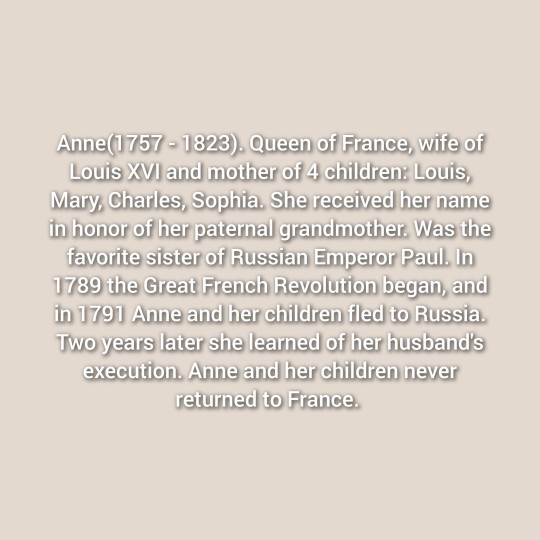
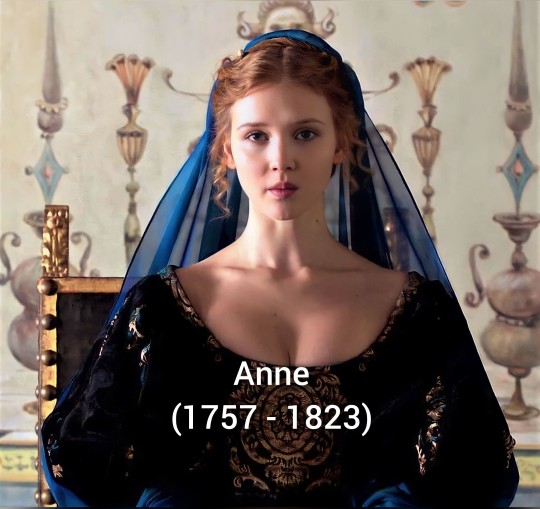
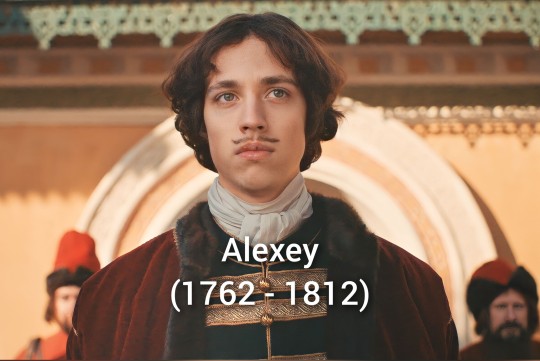

The Romanovs AU: Peter III(1728 - 1791) and Catherine II(1729 - 1792).
In 1745, the Prussian princess Sophia Augusta Frederica of Anhalt-Zerbst became the wife of the heir to the Russian throne, Peter, and converted to Orthodoxy. After adopting the Provo-Slavism, she ceased to be a Prussian princess and became the Russian Tsarevna Catherine Elekseevna. Peter did not love his wife, but after the birth of their eldest daughter he looked at her differently, and the birth of a son finally brought the couple closer together. In 1762 the Russian Empress Elisabeth died and Peter became Emperor. He reigned in the Russian Empire together with his wife. Almost 30 years they ruled in Russia, but in 1791 Peter died suddenly. For Catherine the death of her husband was a strong blow, she began to lead a reclusive life and did not want to see anyone except her eldest son, as he was similar to her late husband. A year later, Catherine herself died of a heart attack.
Children of Peter III and Catherine:
Elisabeth(1748 - 1815). First-born son of Peter III and Catherine II Alexeevna. Was named in honor of the Russian empress Elisabeth Petrovna. Elisabeth's parents did not like each other, but her birth brought them closer together. In 1764 she married Leopold II and became Empress of the Holy Roman Empire. The married life of Elizabeth and Leopold was a happy one. The marriage produced 12 children: Franz II, Alexander, Clementine, Karl, Mary, Louise, Ferdinand, Ludwig, Leopold, Caroline, Anna and Joseph.
Mary(1750 - 1825). Duchess of Hesse. In 1770 married Ludwig I of Hesse. She was loved not only by her husband and his relatives, but also by her subjects. Mother of 8 children: Ludwig II, Louise, George, Friedrich, Emil, Gustav, Charles, Henrietta.
Paul(1754 - 1822). Emperor of All Russia. The long-awaited heir to the Russian throne. After ascending the throne, Paul continued the work of his grandfather Peter I the Great. Under his rule the Russian Empire reached the peak of its power. Reforms beneficial to the state were adopted, and new and favorable treaties with other countries were concluded. Husband:
1)Augusta Hesse of Darmstadt(died in childbirth).
2)Sophia of Württemberg.
Father of 11 children: stillborn son, Alexander I, Constantine, Alexandra, Elena, Mary, Catherine, Olga, Anna, Nicholas I, Michael.
Anne(1757 - 1823). Queen of France, wife of Louis XVI and mother of 4 children: Louis, Mary, Charles, Sophia. She received her name in honor of her paternal grandmother. Was the favorite sister of Russian Emperor Paul. In 1789 the Great French Revolution began, and in 1791 Anne and her children fled to Russia. Two years later she learned of her husband's execution. Anne and her children never returned to France.
Alexey(1762 - 1812). The last child of Peter III and Catherine II Elekseevna. General Fieldzeichmeister. He was married to Louis XVI's sister Elizabeth. Father of 3 children: Mary, Catherine, Anton.
Романовы AU: Пётр III(1728 - 1791 ) и Екатерина II(1729 - 1792).
В 1745 году прусская принцесса София Августа Фредерика Ангальт-Цербстская стала женой наследника русского престола Петра и приняла провославие. После принятия провославия она перестала быть прусской принцессой и стала русской царевной Екатериной Елексеевной. Пётр не любил свою жену, но после рождения их старшей дочери он по другому посмотрел на нее, а рождение сына окончательно сблизило супругов. В 1762 году умерла российская императрица Елизавета Петровна и Пётр становится императором. Царствовал в российской империи совместно с женой. Почти 30 лет они правили Россией, но в 1791 году Пётр скоропостижно скончался. Для Екатерины смерть мужа стала сильным ударом, она начала вести затворнический образ жизни и никого не хотела видеть кроме старшего сына, так как он был похож на её покойного мужа. А через год не стало и самой Екатерины, она умерла от сердечного приступа.
Дети Петра III и Екатерины II:
Елизавета(1748 - 1815). Первенец Петра III и Екатерины II Алексеевны. Была названа в честь российской императрицы Елизаветы Петровны. Родители Елизаветы не любили друг друга, но её рождение их сблизило. В 1764 году вышла замуж за Леопольда II и стала императрицей Священной Римской империи. Супружеская жизнь Елизаветы и Леопольда была счастливой. В браке родилось 12 детей: Франц II, Александр, Клементина, Карл, Мария, Луиза Фердинанд, Людвиг, Леопольд, Каролина, Анна и Иосиф.
Мария(1750 - 1825). Герцогиня Гессенская. В 1770 вышла замуж за Людвиг I Гессенского. Её любил не только муж и его родственники, но и подданные. Мать 8 детей: Людвиг II, Луиза, Георг, Фридрих, Эмиль, Густав, Карл, Генриетта.
Павел(1754 - 1822). Император Всероссийский. Долгожданный наследник русского престола. После восшествия на пр��стол Павел продолжил дело своего деда Петра I Великого. При его правлении российская империя достигла пика своей могущественности. Были приняты полезные для государства реформы, а также заключены новые выгодные договора с другими странами. Муж:
1)Августы Гессен Дармштадтской(умерла при родах).
2)Софии Вюртембергской.
Отец 11 детей: мертворожденный сын, Александр I, Константин, Александра, Елена, Мария, Екатерина, Ольга, Анна, Николай I, Михаил.
Анна(1757 - 1823). Королева Франции, жена Людовика XVI и мать 4 детей: Людовик, Мария, Шарль, София. Получила свое имя в честь бабушки по отцовской линии. Была любимой сестрой российского императора Павла. В 1789 году началась Великая французская революция, а в 1791 Анна с детьми сбежала в Россию. Через 2 года она узнала о казни мужа. Анна и её дети во Францию больше не вернулись.
Алексей(1762 - 1812). Последний ребёнок Петра III и Екатерины II Елексеевны. Генерал фельдцейхмейстер. Был женат на сестре Людовика XVI Елизавете. Отец 3 детей: Мария, Екатерина, Антон.
#history#history au#romanovs#russian#russian imperial family#royal family#royalty#russians#romanov family#18th century#19th century#17th century#russian history#russia#russian royalty#royals#royal#house of romanov#House of romanovs
6 notes
·
View notes
Note
I know that princess Vera Kostantinovna had a sad childhood.
But i dont know much about her adult life cuz its very hard to find.
Did she ever got married? Or had kids
Hi!
Grand Duchess Vera Konstantinovna (1854-1912) had a very sad childhood because of her nervous condition that she was diagnosed with and her cold parents who thought that she was a “menace”.
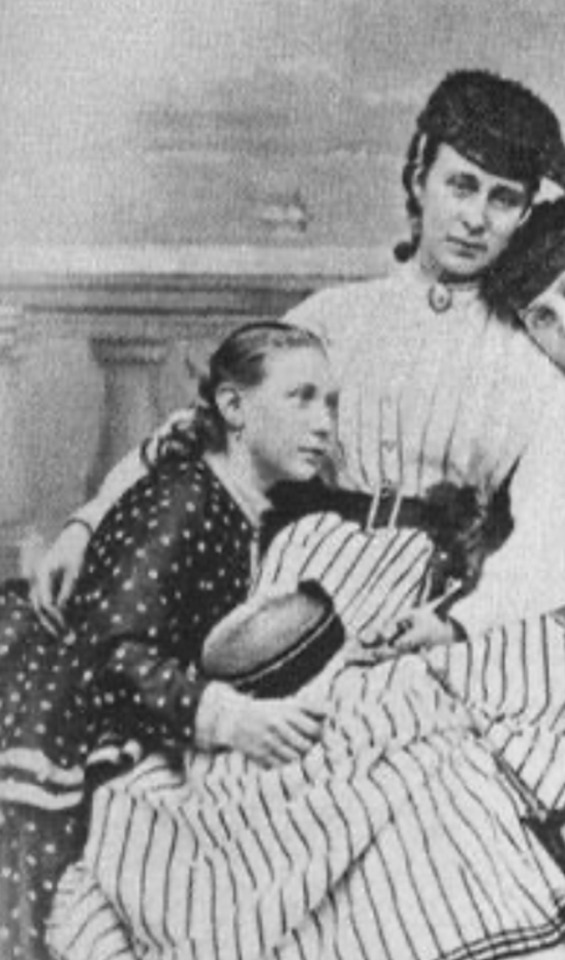
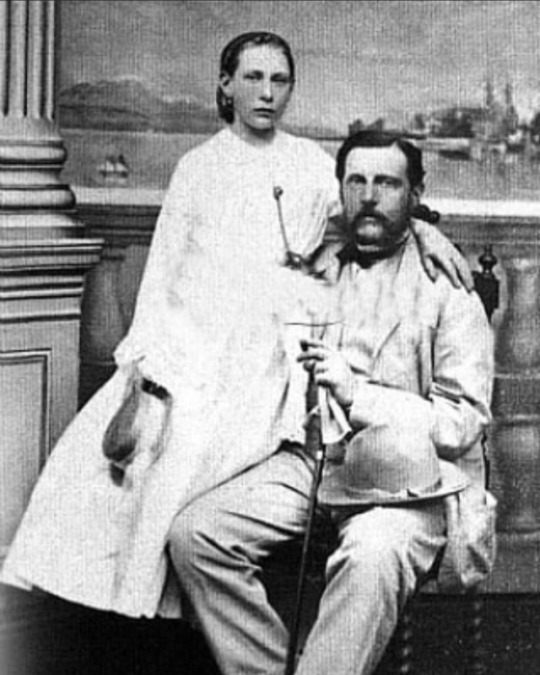
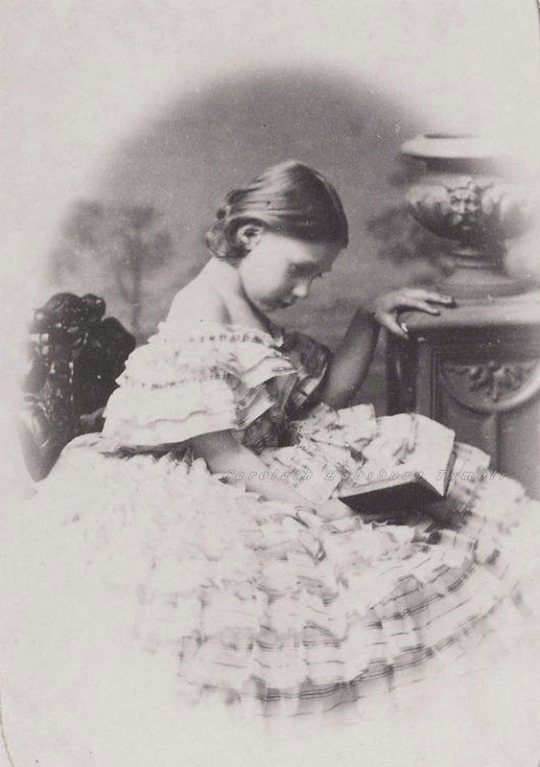
Marriage: She ended up marrying Duke Eugen of Württemberg (a descendant of the Sicilian branch of the Württemberg family) at the age of 17 in 1871. The marriage was arranged by her adoptive parents (and paternal aunt and uncle) Karl and Olga (GD Olga Nikolaevna Of Russia). The marriage was definitely a relieving one for both of Vera’s families because for Karl and Olga, she could stay in the country, and for her biological parents, Konstantin Nikolaevich and Alexandra Iosifovna, she would have a suitable match. A lot of people (mostly extended family) sympathized Eugen because they thought that Vera was “ugly” and didn’t exactly think she was the most eligible women, but Eugen didn’t really care what they thought and was kind to Vera. But Alas! Vera and Eugen’s married life didn’t last long as Eugen died while in the Württemberg army. Vera wasn’t over saddened or grief stricken by his death but was still sad. She never ended up marrying again and remained a widow for the rest of her life.


Children: before her husband died, she managed to have 3 children with him. The first, named Charles Eugen of Württemberg sadly died seven months later and a year later she had twin daughters named Olga and Elsa a whom she loved dearly
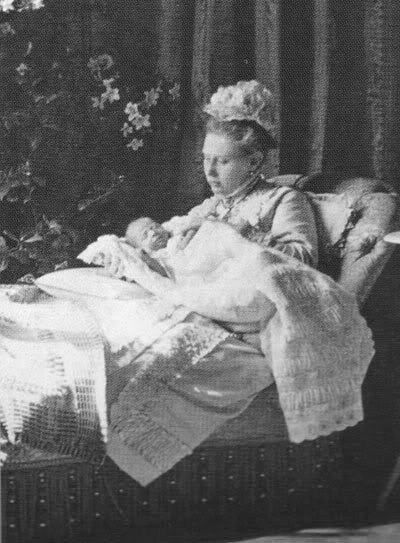
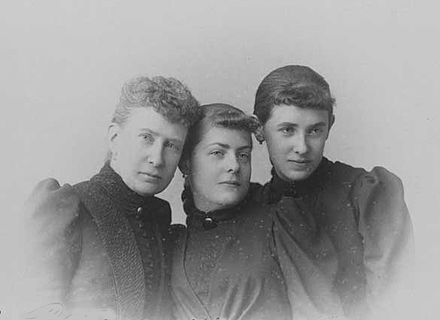
Later life: Her life after marriage and childbirth was good. She preferred to stay in her adopted country of Württemberg (which she now considered to be her own country) instead of Russia but she visited her sister Queen Olga of Greece often. She was known to be quite talkative at Court and was very eccentric. In her later years of life, she visited Russia a lot because of the coronation of Tsar Nicholas II. Her daughters had many children which gave Vera many grandchildren whom she loved dearly. She was also known to be very humorous and she was well loved by her growing family. By the late 1800s, Vera was in very poor health and her nervous condition was getting worse (she often suffered from random bouts of movement and other various attacks). She was extremely nearsighted which required her to wear old fashioned spectacles permanently. In 1909, she abandoned her orthodox faith and converted to Lutheranism which she thought that she “understood” better. In 1911, Vera suffered a stroke, slowly recovered, and died six months later in April of 1912 of acute renal failure at the age of 58. The loss was deeply mourned by her family and the country of Württemberg where she was loved deeply.


Thank you for asking!
2 notes
·
View notes
Text

Duchess Olga of Württemberg, early 1880s.
12 notes
·
View notes
Photo

Grand Duchess Olga Nikolaevna, Queen of Württemberg by marriage.
Credits on the image.
#olga nikolaevna#grand duchess olga nikolaevna#grand duchess#queen of württemberg#romanov#imperial russia#russian royalty#royalty
33 notes
·
View notes
Text
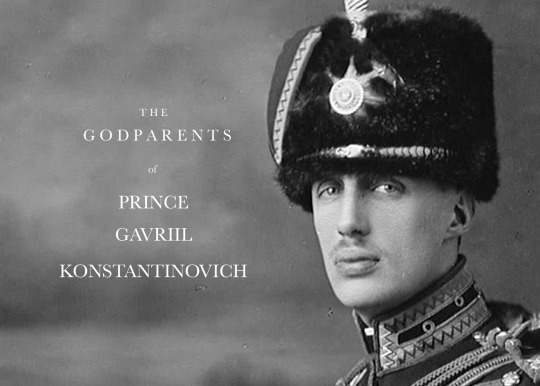


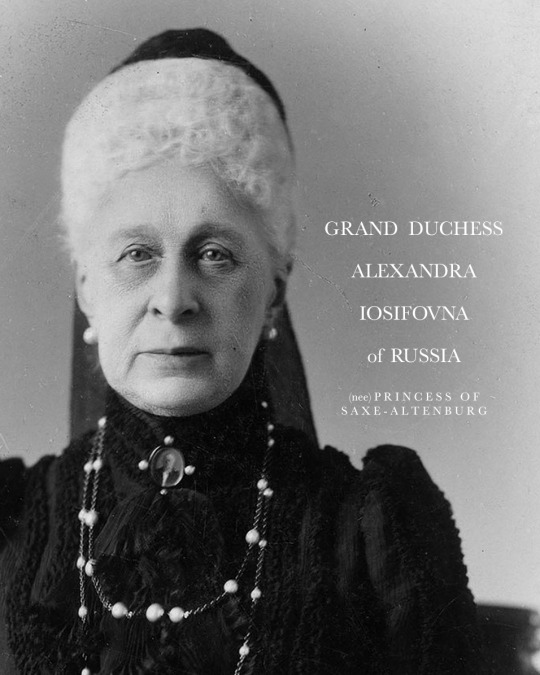
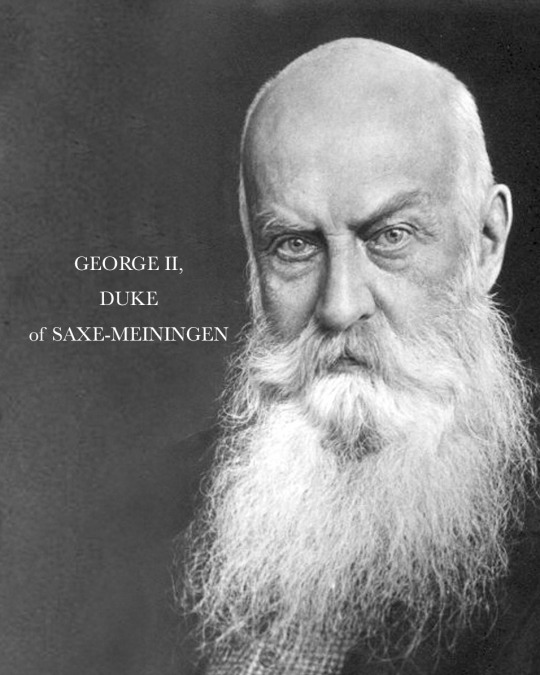

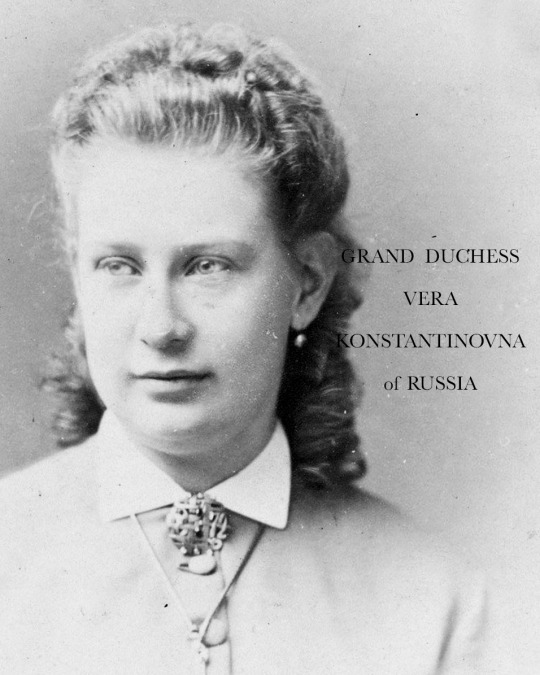



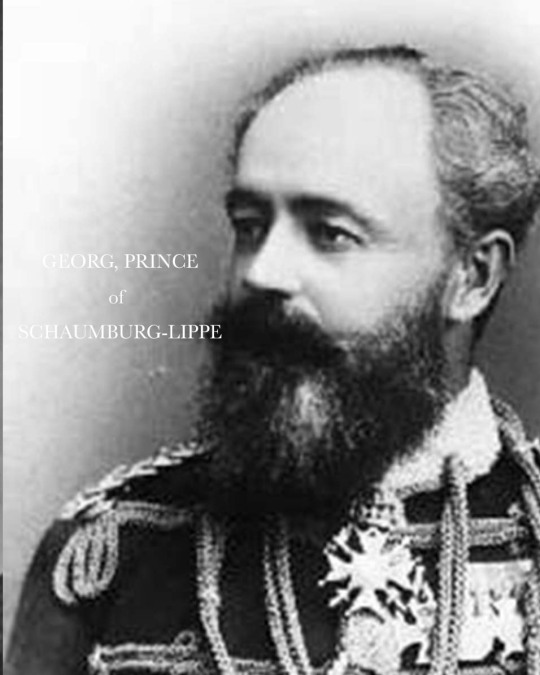
GODPARENTS OF PRINCE GAVRIIL KONSTANTINOVICH
Prince Gavriil Konstantinovich was born on 15 July 1887 in the Grand Bedroom of Empress Maria Feodorovna at Pavlovsk Palace, Saint Petersburg. The second son of Grand Duke Konstantin Konstantinovich of Russia and his German-born wife Grand Duchess Elizabeth Mavrikievna, he was christened on 8 August at 1:30 pm at a private church of Pavlovsk. His godparents were:
ALEXANDER III, EMPEROR OF RUSSIA - his father��s first cousin was named as one of his many godparents. He was highly reactionary in domestic affairs and reversed some of the liberal reforms of his father, Alexander II. He was most likely present at his young cousin’s christening.
GEORGE I, KING OF GREECE - his uncle, the husband of Queen Olga Konstantinovna, was one of his godparents. Born a Danish prince, he was elected king by the Greek National Assembly, when he was only 17. His reign of almost 50 years (the longest in modern Greek history) was characterized by territorial gains as Greece established its place in pre–World War I Europe.
GRAND DUCHESS ALEXANDRA IOSIFOVNA OF RUSSIA - his paternal grandmother, born a German princess, was listed as one of his godparents. Married to Grand Duke Konstantin Nikolaevich of Russia in 1848, she was considered a beautiful woman, but plagued by insecurity. Within the family, she was later known to be a formidable character.
GEORGE II, DUKE OF SAXE-MEININGEN - his maternal great-uncle, was the penultimate Duke of Saxe-Meiningen, reigning from 1866 to 1914. He was likely present, having been named as one of his young nephew's godparents.
ERNST I, DUKE OF SAXE-ALTENBURG - a paternal great-uncle named as a godparent of the young prince, was the reigning Duke of Saxe-Altenburg from 1853 until 1908. He was of a retiring disposition and he took little active part in running the country, of which he ruled for fifty-five years.
GRAND DUCHESS VERA KONSTANTINOVNA OF RUSSIA - one of his paternal aunt, Vera was known in royal circles as an eccentric both in appearance and behaviour. She was named as one of Gabriel's godparents, and was present at the christening. Although she kept in touch with her Romanov relatives, visiting Russia many times, she identified more closely with her adopted country, Württemberg.
GRAND DUKE DMITRI KONSTANTINOVICH OF RUSSIA - his paternal uncle, and his favourite, was also one of his godparents. He followed a military career, and was religious. He never married, and was one of several Romanov relatives executed by a firing squad at the walls of Peter and Paul Fortress during the Russian Civil War.
MARIE FRIEDRIKE, DOWAGER DUCHESS OF SAXE-MEININGEN - his maternal great-grandmother was one of his godparents. Born a Princess of Hesse-Kassel, she married the Duke of Saxe-Meiningen, with whom two children (seventeen years apart) were born.
PRINCESS AUGUSTA OF SAXE-MEININGEN - his maternal grandmother was absent at her grandson's christening, of whom she was named as one of his godparents. In 1862, she married Prince Moritz of Saxe-Altenburg, and bore him five children.
GEORG, PRINCE OF SCHAUMBURG-LIPPE - the husband of his maternal aunt, was also absent at the young prince's christening but was named as one of his numerous godparents. He ruled the small Principality of Schaumburg-Lippe within the German Empire from 1893 to 1911.
Source
15 notes
·
View notes
Note
When Queen Olga of Württemberg was going to marry her husband, there were many rumors about her husband being gay. How did his father, Tsar Nicholas I, and his older brother, Alexander II, allow this situation? Did not having children upset his family? For example, he expressed his sadness in the letter he wrote to his brother Alexander III's wife, Maria Feodorovna, because Elizabeth Feodorovna and Sergei Alexanderovich did not have children. Do you know a letter or a saying about this for Queen Olga??
Hi! I don’t know much about rumors at the time of the engagement/wedding ( @sbiizv might be able to help you there, though). Olga certainly didn’t write about it in her memoir, haha. By the time Karl of Wurttemberg came into the picture, Nicholas I was desperate to marry Olga off—she was 24 years old already and had had several potential matches that had fallen through, and she was also flirting with a man of unsuitable rank. He was also keen to have her make a dynastic marriage, as her sisters had both married fairly minor princes, and pickings were slim at this point, so he had to take what he could get, so to speak. The Romanovs were connected to the Wurttembergs, as Nicholas I’s mother was born a Duchess of Wurttemberg, and his sister, Grand Ekaterina Pavlovna, had been the second wife of Karl’s father, so I suppose it was an attractive potential marriage from that perspective as well. I don’t know how Olga or Karl’s family felt about their being childless, but I do believe it caused Olga herself some pain. Later, she and Karl formally adopted Olga’s “problem child” niece, Grand Duchess Vera Konstantinovna, and Olga loved her as her own.
11 notes
·
View notes
Text

Grand Duchess Vera Konstantinovna of Russia (16 February 1854 – 11 April 1912), was a daughter of Grand Duke Konstantine Nicholaievich of Russia. She was a granddaughter of Tsar Nicholas I and first cousin of Tsar Alexander III of Russia.
She had a difficult childhood marked by illness and tantrums. In 1863, while her father was Viceroy of Poland, she was given away to be raised by her childless uncle and aunt, King Karl and Queen Olga of Württemberg. Vera's condition improved in their home and she outgrew her disruptive behavior. In 1871 she was legally adopted by Karl and Olga, who arranged her marriage in 1874 to Duke Eugen of Württemberg (1846–1877), a member of the Silesian ducal branch of the family. Her husband died suddenly three years later. Vera, only twenty-three years old, did not remarry, dedicating herself to her twin daughters. At the death of King Karl in 1891, Vera inherited a considerable fortune and she turned her home into a cultural gathering place. She was a popular figure in Württemberg, notable for her charitable work.
Grand Duchess Vera was known in royal circles as an eccentric both in appearance and behavior. Although she kept in touch with her Romanov relatives, visiting Russia many times, she identified more closely with her adopted country. In 1909 she abandoned Orthodox Christianity and converted to Lutheranism. She died two years later after a stroke.
#Vera Konstantinovna of Russia#House Holstein-Gottorp-Romanov#women in history#xix century#xx century
1 note
·
View note
Photo

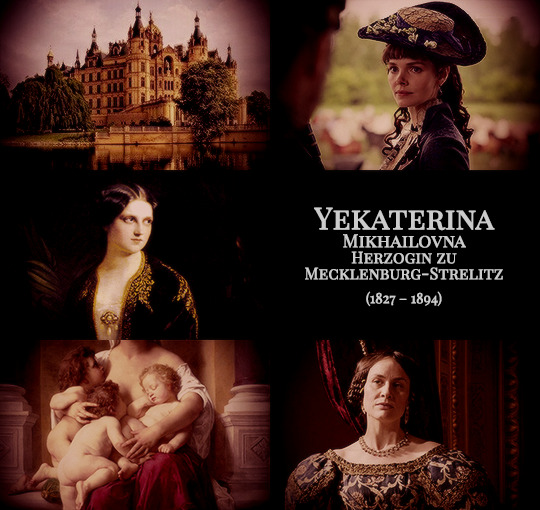
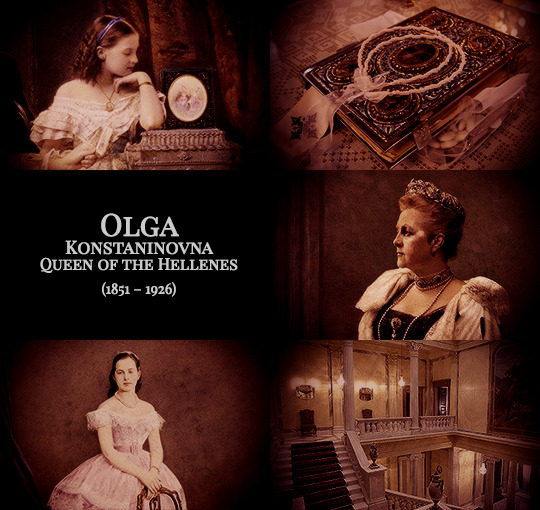
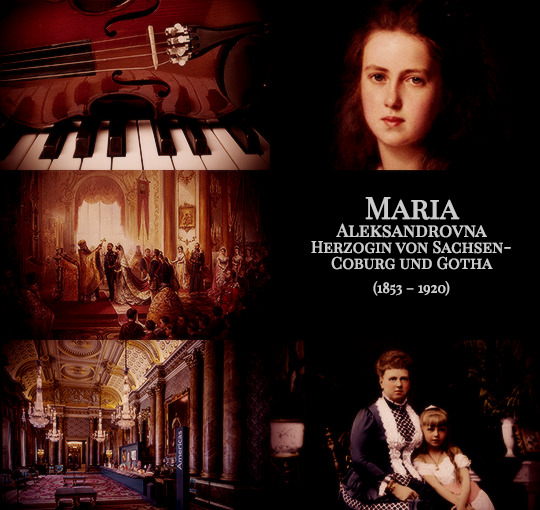
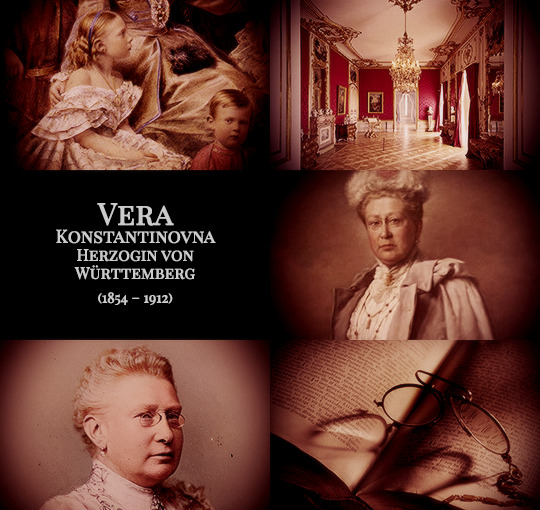
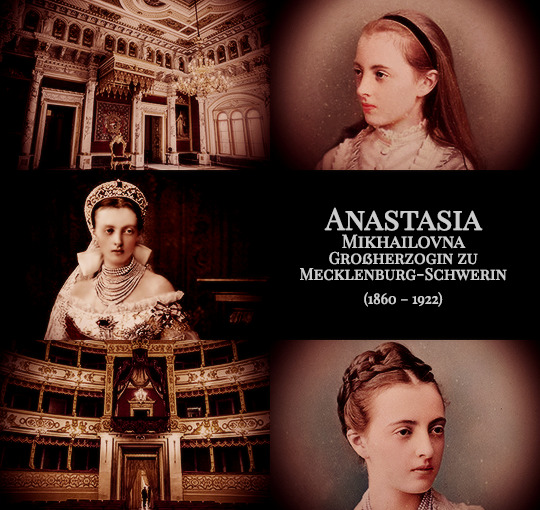
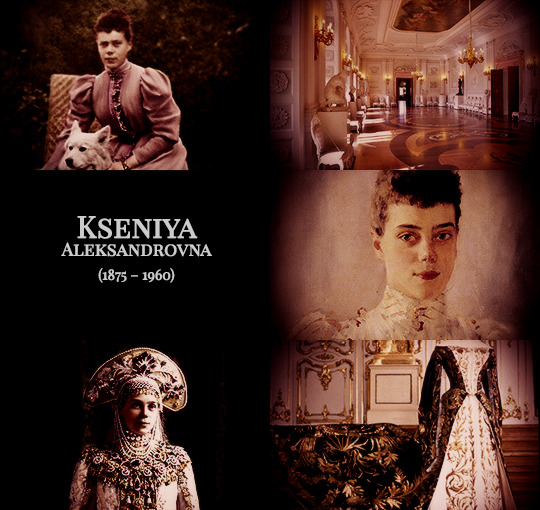
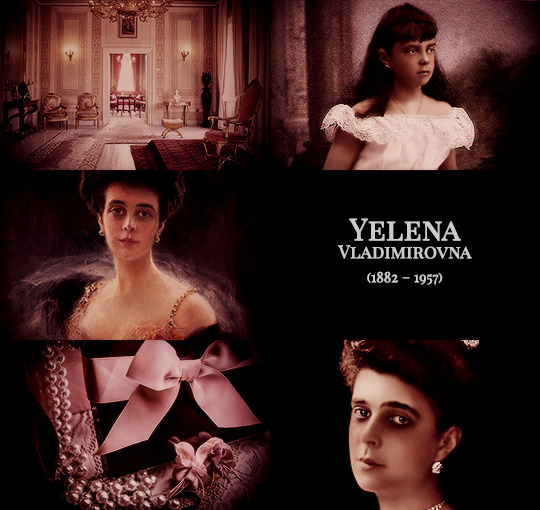

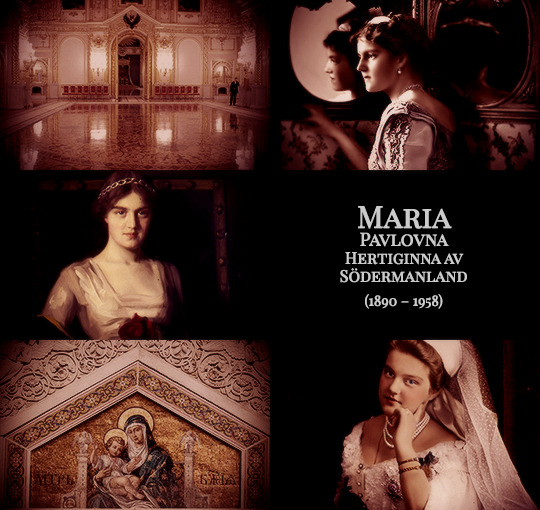
Women of the House of Romanov, part III
Grand Duchess Yelisaveta Mikhailovna. Daughter of Grand Duke Mikhail Pavlovich and Charlotte von Württemberg.
Grand Duchess Yekaterina Mikhailovna. Daughter of Grand Duke Mikhail Pavlovich and Charlotte von Württemberg. Mother of Helene zu Mecklenburg-Strelitz, Prinzessin von Sachsen-Altenburg
Grand Duchess Olga Konstaninovna. Daughter of Grand Duke Konstantin Nikolaevich and Alexandra von Sachsen-Altenburg. Mother of Alexandra of Greece and Denmark and Maria of Greece and Denmark.
Grand Duchess Maria Aleksandrovna. Daughter of Tsar Aleksandr II and Marie von Hessen und bei Rhein. Mother of Marie of Edinburgh, Queen of Romania; Victoria Melita of Saxe-Coburg and Gotha; and Beatrice of Saxe-Coburg and Gotha, infanta de España.
Grand Duchess Vera Konstantinovna. Daughter of Grand Duke Konstantin Nikolaevich and Alexandra von Sachsen-Altenburg. Mother of Elsa von Württemberg, Prinzessin zu Schaumburg-Lippe and Olga von Württemberg, Prinzessin zu Schaumburg-Lippe.
Grand Duchess Anastasia Mikhailovna. Daughter of Grand Duke Mikhail Nikolaevich and Cäcilie Auguste von Baden. Mother of Alexandrine zu Mecklenburg, Dronning af Danmark and Cecilie zu Mecklenburg, Kronprinzessin des deutschen Kaiserreichs.
Grand Duchess Kseniya Aleksandrovna. Daughter of Tsar Aleksandr III and Dagmar af Danmark. Mother of Princess Irina Aleksandrovna.
Grand Duchess Yelena Vladimirovna. Daughter of Grand Duke Vladimir Aleksandrovich and Marie zu Mecklenburg. Mother of Olga of Greece and Denmark; Elisávet of Greece and Denmark, Gräfin zu Toerring-Jettenbach; and Marina of Greece and Denmark, Duchess of Kent.
Grand Duchess Olga Aleksandrovna. Daughter of Tsar Aleksandr III and Dagmar af Danmark.
Grand Duchess Maria Pavlovna. Daughter of Grand Duke Pavel Aleksandrovich and Alexandra of Greece and Denmark.
#historyedit#house of romanov#russian history#european history#women's history#history#19th and early 20th#nanshe's graphics
86 notes
·
View notes
Text

Currently there is no known photos of the wedding of Tsar Nicholas II of Russia and Princess Alix of Hesse and By Rhine on 14 November 1894 ( 26 November 1894 N.S.) at the Grand Church of the Winter Palace.Of course they may still be in the Russian Archives,not yet released
On 19 April 1894, Tsarevich Nikolai Alexandrovich Romanov of Russia was at the wedding of Ernst-Ludwig Grand Duke of Hesse, to their mutual cousin,Princess Victoria Melita of Saxe-Coburg and Gotha. Nicholas had also obtained permission from his parents, Tsar Alexander III and Empress Marie Feodorovna, to propose to Ernst's younger sister, Princess Alix of Hesse and by Rhine.The Emperor and Empress had initially been opposed to the match. However, Nicholas, who had first met Alix a decade earlier in St. Petersburg when Alix's sister, Princess Elisabeth of Hesse and by Rhine, married Nicholas's uncle, Grand Duke Sergei Alexandrovich Romanov of was not to be dissuaded. Furthermore, Tsar Alexander's health was beginning to fail.
Shortly after arriving in Coburg, Nicholas proposed to Alix. However, Alix, who was a devout Lutheran, rejected Nicholas's proposal, as in order to marry the heir to the throne, she would have to convert to Russian Orthodoxy.However, Alix's cousin, Kaiser Wilhelm II of Germany, who had been at the wedding, insisted that it was her duty to marry Nicholas, despite her religious scruples.Elisabeth also spoke with her, insisting that there were not that many differences between Lutheranism and Orthodoxy. At the prompting of the Kaiser, Nicholas proposed for the second time, and she accepted.
On 1 November 1894, Alexander III died at Maly Palace, Livadia, leaving twenty-six-year-old Nicholas as the next Tsar of Russia. The following day, Alix, who had arrived at Livadia several days earlier in order to receive the dying Tsar's blessing, was received into the Russian Orthodox Church as Grand Duchess Alexandra Feodorovna.Alix had apparently expressed her wish to take the name Catherine, but decided to take the name Alexandra on Nicholas's request.
Guests
The groom's family
•The Dowager Empress Marie Feodorovna of Russia ~ mother of Nicholas II
•Grand Duchess Xenia Alexandrovna Romanova of Russia ~ sister of Nicholas ll
•Grand Duke Alexander Mikhailovich Romanov of Russia ~ brother-in-law and first cousin once removed) of Nicholas II
•Grand Duke Mikhail Alexandrovich Romanov of Russia, brother of Nicholas II
•Grand Duchess Olga Alexandrovna Romanova of Russia, sister of Nicholas II
•Grand Duke Vladimir Alexandrovich Romanov of Russia ~ paternal uncle of Nicholas II
Grand Duchess Marie Pavlovna Romanova of Russia (the Elder) ~ paternal aunt by marriage of Nicholas II
•Grand Duke Kyril Vladimirovich Romanov of Russia ~ paternal first cousin of Nicholas II
•Grand Duke Boris Vladimirovich Romanov of Russia ~ paternal first cousin of Nicholas II
•Grand Duke Andrei Vladimirovich Romanov of Russia ~ paternal first cousin of Nicholas II
•Grand Duchess Elena Vladimirovna Romanova of Russia ~ paternal first cousin of Nicholas II
•Grand Duke Alexei Alexandrovich Romanov of Russia ~ paternal uncle of Nicholas II
•Grand Duke Sergei Alexandrovich Romanov of Russia ~ paternal uncle of N0icholas II
Grand Duchess Elisabeth Feodorovna Romanova of Russia ~ sisters-in-law and paternal aunt by marriage of Nicholas II
•Grand Duke Pavel Alexandrovich Romanov of Russia ~ paternal uncle of Nicholas II
•Grand Duchess Alexandra Iosifovna Romanova of Russia ~ paternal grandaunt by marriage of Nicholas II
•Grand Duke Konstantin Konstantinovich Romanov of Russia ~ first cousin,once removed of Nicholas II
•Grand Duchess Elizaveta Mavrikievna Romanova of Russia ~ first cousin once removed by marriage of Nicholas II
•Grand Duke Dmitri Konstantinovich Romanov of Russia ~ first cousin once removed of Nicholas II
•Duchess Vera of Württemberg, first cousin once removed of Nicholas II (representing the King of Württemberg)
•Grand Duke Mikhail Nikolaevich Romanov of Russia ~ paternal granduncle of Nicholas II
•Grand Duke Nikolai Mikhailovich Romanov of Russia ~ first cousin once removed of Nicholas II
•Grand Duke Georgiy Mikhailovich Romanov of Russia ~ first cousin once removed of Nicholas II
•Grand Duke Sergei Mikhailovich Romanov of Russia ~ first cousin once removed of Nicholas II
•King Christian lX of Denmark ~ maternal grandfather of Nicholas II
•King George l of the Hellenes ~ maternal uncle of Nicholas ll
•Queen Olga of the Hellenes ~ maternal aunt and first cousin once removed of Nicholas II
•Prince George of Greece and Denmark ~ first cousin of Nicholas II
•Prince Valdemar of Denmark ~ maternal uncle of Nicholas II
The bride's family
•Grand Duke Ernst-Ludwig of Hesse and by Rhine ~ brother of Alexandra Feodorovna
•Princess Irene of Prussia ~ Sister of Alexandra Feodorovna
•Prince Henry of Prussia ~ brother-in-law and maternal first cousin of Alexandra Feodorovna (representing the German Emperor)
•Edward, Prince of Wales ~ uncle of both Alexandra and Nicholas (representing the Queen of the United Kingdom)
•Alexandra,Princess of Wales ~ aunt of both Alexandra and Nicholas (representing the Queen of the United Kingdom)
•The Prince George,Duke of York ~ Alexandra and Nicholas' mutual first cousin
•Alfred,Duke and Duchess of Saxe-Coburg-Gotha ~ uncle of Alexandra Feodorovna and uncle by marriage of Nicholas ll
•Grand Duchess Maria Alexandrovna Romanova,Duchess of Saxe-Coburg-Gotha ~ aunt of Nicholas ll and aunt by marriage of Alexandra Feodorovna
•Ferdinand, Crown Prince of Romania, husband of Alexandra and Nicholas' mutual first cousin (representing the King of Romania)
Foreign Royalty
•Mecklenburg : Duke John Albert of Mecklenburg ~ second cousin once removed of Nicholas II (representing the Grand Duke of Mecklenburg-Schwerin)
•Grand Duchy of Baden : Prince Wilhelm and Princess Maria Maximilianovna of Baden, second cousin once removed of both Nicholas and Alexandra, and first cousin once removed of Nicholas II (representing the Grand Duke of Baden)
•The Duke of Leuchtenberg, first cousin once removed of Nicholas II
Prince George Maximilianovich and Princess Anastasia of Leuchtenberg, first cousin once removed of Nicholas II and his wife
•Grand Duchy of Oldenburg : Duke Alexander Petrovich and Duchess Eugenia Maximilianovna of Oldenburg, second cousin once removed and first cousin once removed of Nicholas II (cousin of the Grand Duke of Oldenburg)
•Grand Duchy of Oldenburg : Duke Peter Alexandrovich of Oldenburg ~ second cousin of Nicholas II
•Grand Duchy of Oldenburg : Duke Constantine Petrovich of Oldenburg ~ second cousin once removed of Nicholas II
•Grand Duchy of Mecklenburg-Strelitz : Duke Georg Alexander of Mecklenburg-Strelitz ~ second cousin once removed of Nicholas II (nephew of the Grand Duke of Mecklenburg-Strelitz)
•Grand Duchy of Mecklenburg-Strelitz : Duke Karl Michael of Mecklenburg-Strelitz ~ second cousin once removed of Nicholas II
•Duchy of Saxe-Altenburg Prince Albert and Princess Helene of Saxe-Altenburg ~ third cousin once removed of both Nicholas and Alexandra, and second cousin once removed of Nicholas II (representing the Duke of Saxe-Altenburg)
63 notes
·
View notes